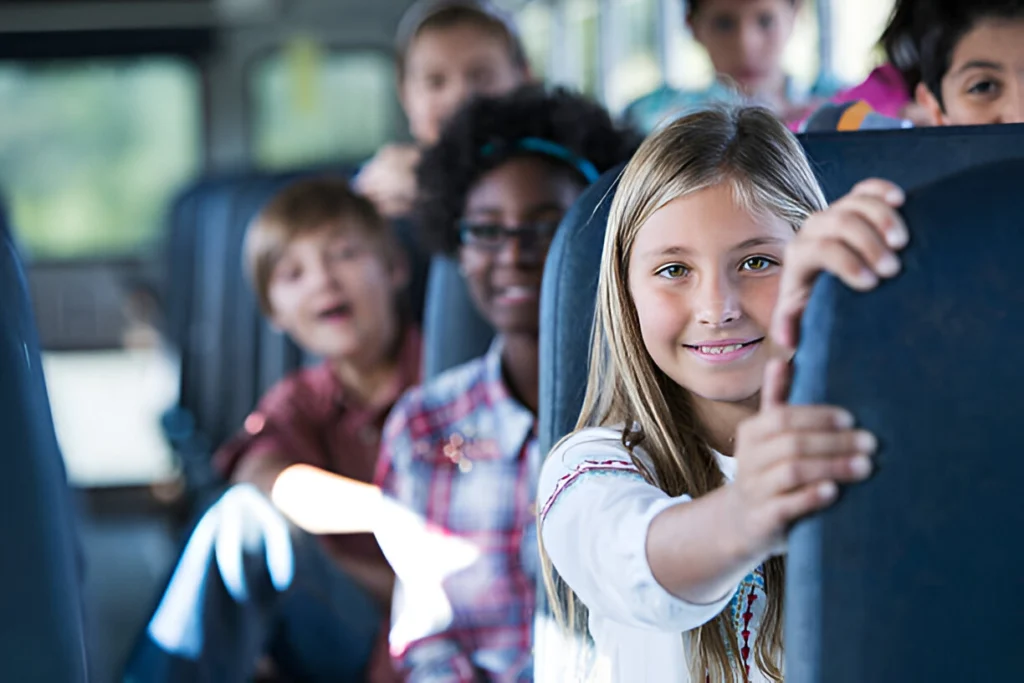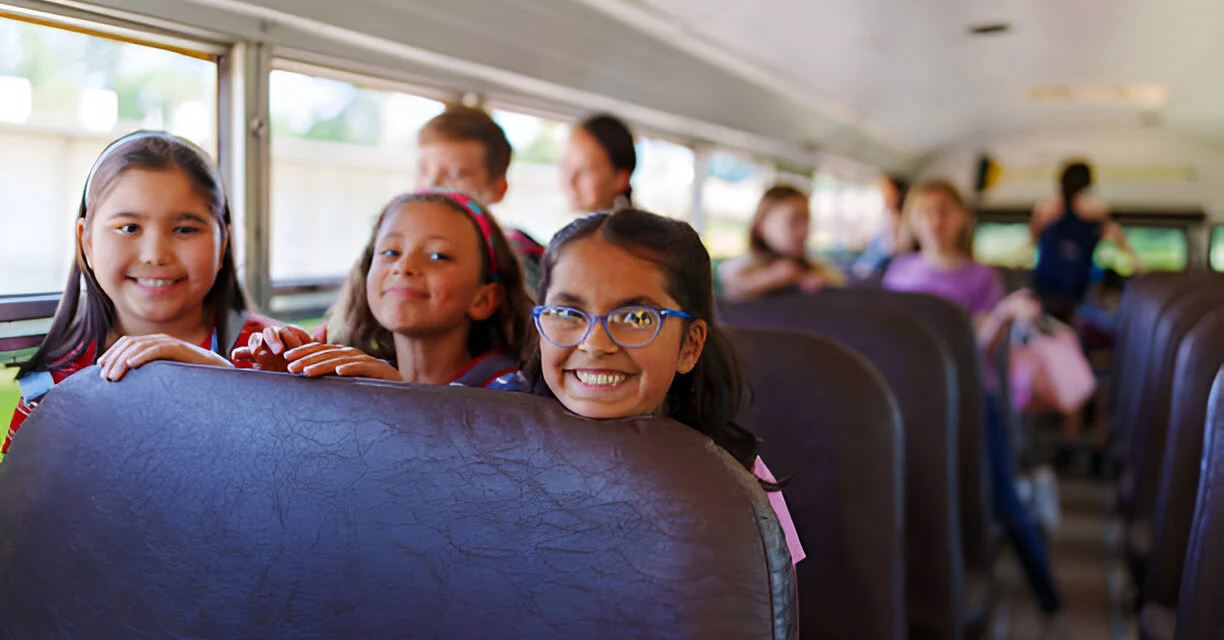As a parent or educator, you know that learning outside the classroom can be powerful. School field trips make the curriculum come alive for students. But, planning fun and educational outings can be tough. Consider overnight trips to D.C., Virginia, or Maryland for a rich experience.
These places offer many engaging and enriching activities for your students.
Planning an educational outing might seem hard, but with the right approach, it can be unforgettable. Whether it’s a day trip or a longer journey, have a clear vision. Think about what your students need and want. By focusing on the purpose and goals, and planning well, your outing will be both fun and meaningful.
Key Takeaways
- Plan bigger trips a year in advance and day trips six weeks in advance1
- Travel out of season to keep costs down for educational outings1
- Organize pre-trip meetings with students and parents to discuss logistics and rules1
- Set clear learning objectives to guide the planning and implementation of the outing1
- Manage larger groups by dividing students into smaller groups for activities1
Determine the Purpose and Goals
When planning educational outings, it’s key to know the purpose of the educational outings and the educational goals you want to reach. These outings should be fun but also offer learning chances that go beyond school2.
Enhance Learning Beyond the Classroom
Educational outings let students learn in real-life settings. They get to use their knowledge in practical ways. This boosts their understanding and helps them think critically and solve problems2.
By linking the outing to the curriculum or what students like, you make learning more meaningful and impactful2.
Facilitate Socialization and Family Bonding
Educational outings also offer chances for socializing and bonding with family. Students get to meet peers, improve social skills, and make friends. For families, these outings are a fun way to bond and create lasting memories2.
When planning an outing, think about what you want students to learn and achieve. This ensures the outing meets your educational goals and enriches their learning experience2.
| Successful Goal Setting | Importance of Goal Setting |
|---|---|
| Close to 80 percent of people keep their New Year’s resolutions for one week, but only 19 percent manage to stick to them for two years3. | Researchers found that the successful pursuit of goals significantly improved students’ report card grades, attendance, and behavior3. |
| Setting realistic, achievable, and motivating goals, along with developing habits to monitor progress and stick with goals over the long term are critical components of successful goal setting3. | Visualizing and articulating personal and academic goals as early as kindergarten can help students develop the habit of goal setting3. |
Gather Information and Preferences

Before you finalize the outing plan, it’s key to know about your students’ dietary needs, likes, and health conditions. This ensures the outing is safe and fun for everyone. By getting this info early, you can make the outing both educational and enjoyable for your students.
Send Out a Questionnaire in Advance
Begin by sending a detailed questionnaire to your students early. This will give you insights into their favorite subjects, hobbies, and interests4. You can also ask about their dietary needs, food allergies, and any health conditions that need special care4. This way, you can plan an outing that meets the needs of your diverse student group.
Consider Dietary Needs and Medical Conditions
When planning the outing, remember your students’ dietary needs and health conditions4. This ensures everyone can join in and have fun without worrying about food or access. Make sure to offer special diets like vegetarian, vegan, gluten-free, or halal. Also, be ready to handle any health needs that might come up during the outing.
| Consideration | Importance |
|---|---|
| Dietary Needs | Ensures all students can participate and enjoy the outing without any food-related concerns. |
| Medical Conditions | Allows for proper planning and preparation to address any medical needs that may arise during the outing. |
By gathering information about your students’ preferences, dietary needs, and medical conditions, you can make an educational outing that’s engaging and inclusive for all54.
Select Engaging Destinations
When planning your educational outing, think about local attractions and hidden gems. Virtual field trips are great alternatives due to budget cuts and travel restrictions6. Choose places that match your curriculum or students’ interests to make the outing valuable6.
Explore Local Attractions and Hidden Gems
Don’t just visit famous landmarks. Look for local spots and hidden gems for unique learning chances7. Places like history museums, art galleries, and science centers offer great learning experiences7. These spots can make your educational outing memorable and engaging8.
Align with Curriculum or Interests
Make sure your outing matches your classroom lessons or students’ interests6. Visit places like historical sites, botanical gardens, or national parks for lessons on history, science, or geography7. Adding activities like scavenger hunts can make it fun and keep students interested7.
By choosing the right destinations, you can give your students a memorable and enriching experience687.
| Destination Type | Educational Focus | Examples |
|---|---|---|
| History Museums | Historical events, cultural heritage | New-York Historical Society |
| Art Galleries | Visual arts, artistic expression | Local art museums |
| Science and Natural History Museums | Scientific concepts, natural phenomena | American Museum of Natural History |
| Aquariums | Marine life, environmental conservation | Local aquariums |
| Environmental or Nature Reserves | Ecology, sustainability | Local nature preserves |
| Local Government Buildings | Civics, government structures | City Hall, state capitol |
| STEM Workshops | Science, technology, engineering, math | Robotics labs, maker spaces |
| Factory or Industry Tours | Manufacturing, applied technology | Local factories, production facilities |
| Planetariums | Astronomy, space exploration | Nearby planetariums |
| Performing Arts Theaters | Theater, music, dance | Local theaters, concert halls |
“Field trips provide unique opportunities for disadvantaged students and help level the playing field.”
– Carylann Assante, Student & Youth Travel Association
Choose destinations that match your curriculum and capture your students’ interest67. A well-planned outing can be a memorable experience for everyone8.
Plan Logistics and Transportation

When planning educational outings, it’s key to think about logistics and transportation. This ensures a smooth and fun trip for everyone. Choose the right transportation and consider the distance to your destination9.
Arrange for Comfortable Travel
Choose transportation that keeps students comfortable. Buses or vans with lots of room, air control, and extras make the trip better. Make sure the vehicle can hold everyone comfortably9.
Consider Distance and Travel Time
Think about how far you’ll travel and how long it will take. Long trips can make people tired and mess up your plans9. Pick places that are close enough for a quick trip, so you have time for fun and learning9.
| Consideration Factor | Importance |
|---|---|
| Budget | Make sure the cost of travel fits your budget. |
| Capacity | Choose vehicles that can hold everyone comfortably. |
| Accessibility | Make sure travel options work for everyone, including those with mobility issues. |
| Connection to Transport Links | Pick places that are easy to get to by public transport or have good parking. |
Good planning of logistics and transportation makes your educational outing better. It helps everyone learn more and have less trouble9.
Organize Groups and Chaperones
When planning educational outings, it’s key to split participants into smaller groups. This makes supervision easier and helps everyone focus on the activities10. Each group should have a chaperone, usually 5-10 students, based on age and the outing’s location10.
Separate into Smaller Groups for Ease
Smaller groups make it simpler to keep an eye on everyone. This way, each child gets the help they need, making the outing more fun and educational10. Plus, it’s easier to talk, count heads, and have meaningful discussions in smaller groups10.
Assign Responsible Chaperones
Picking the right chaperones is essential for a successful outing. They keep everyone safe and engaged11. Make sure chaperones know their roles and have all the info they need to lead their groups well11. Chaperones who know the place can handle any issues that come up, making the outing smoother11.
To help chaperones do their job better, assign specific students to each one and group them up12. This way, supervision is better, moving between places is quicker, and chaperones can communicate more easily12.
With good group organization and the right chaperones, your educational outing will be a hit. Everyone will learn and have fun101112.
Educational Outings
When you go on educational outings, give students tasks that help them learn more. You can have them do hands-on experiments, explore interactive exhibits, or work on creative projects. This way, they can really get into the subject and enjoy learning13
Encouraging Journaling and Reflections
Ask your students to keep journals or logs during these outings. It helps them think about what they’ve learned and how it connects to class. They can use these journals for essays, presentations, or more talks later on.14
Reflection is key to really getting what you’ve learned. Ask students to think about what they found out, how it ties to class, and what surprised them. This makes learning stick and can spark a love for learning that lasts14.
“Educational outings outside of school help children feel more connected to the information they are learning. This connection can lead to greater retention of knowledge and a deeper appreciation of the world around them.”
Incorporate Themes and Creativity
Make educational outings better by adding a theme. This makes the activities and experiences fit together well. It also sparks students’ creativity and imagination.15
Align Activities with a Central Theme
Choose a central theme that interests the students. It should match the curriculum or the place you’re visiting. This theme guides the design of activities and exhibits, making learning fun and effective16.
- Themes can be about history, science, culture, or the future. They depend on what you want to teach and what the students need to learn.
- Make sure all activities fit the theme. This could include interactive exhibits, workshops, scavenger hunts, or role-playing.
- Get students to express their creativity. They can write stories, make posters, or create art about the theme.
Using a central theme makes learning exciting. It encourages students to explore and discover, helping them grow and learn more1516.
For great educational outings, mix structured learning with creative exploration. A central theme helps make the experience memorable and valuable for your students15.
Prioritize Safety and Accessibility
Keeping educational outings safe and accessible is key. This ensures a secure and welcoming space for everyone. It’s important to have the right supervision, first aid, and to meet the needs of all students.
Ensure Appropriate Supervision and First Aid
Having enough supervision is crucial for student safety17. Use security steps like fences, limited entry points, and cameras to keep the school safe17. Also, make sure trained staff and chaperones are there to help and watch over students. A first aid kit and trained emergency responders are also vital for quick help when needed.
Accommodate Special Needs and Mobility Concerns
Being inclusive is important when planning outings. Make sure to include students with special needs or mobility issues. This might mean accessible transport, special gear, and activities that everyone can enjoy18. This way, every student can join in and learn without barriers.
It’s not just about following rules; it’s about making a safe and supportive space for all. By focusing on safety and inclusion, you build trust and excitement. This makes the outing more meaningful for everyone.
To boost safety in your outings, think about using tech like the SaferWatch app. It offers advanced safety features to protect your students and staff17.
“Investing in the safety and accessibility of educational outings is not just a responsibility, but an opportunity to create an environment where every student can thrive and reach their full potential.”
By focusing on these key areas, your outings will not only be educational but also safe and welcoming for all.
Schedule Breaks and Refreshments
When planning an educational outing, it’s key to include breaks and refreshments in the plan. This lets students rehydrate, snack, and recharge. It helps keep their energy and interest high throughout the event19.
Plan for Hydration and Snack Breaks
It’s vital to make sure students have hydration and snacks available. Regular breaks for stretching, healthy snacks, and rehydration are crucial. This prevents tiredness and keeps them lively and interested19.
When setting up breaks, think about the outing’s length and the students’ ages and energy. For long outings, include at least 60 minutes of free-choice activities and 60 minutes of outdoor time19. Also, keep group activities short, around 15 to 20 minutes, to keep everyone engaged19.
By carefully planning for hydration and snack breaks, students will stay focused, energized, and excited to join in. This makes the educational outing a success19.
Breaks and refreshments do more than meet physical needs. They also offer chances for students to socialize, rest their minds, and connect with the learning experience19. By focusing on these, you can make the outing engaging and memorable, sparking a love of learning19.
Seek Volunteers and Community Support
Planning an educational outing is a team effort. Reach out to volunteers, local groups, and partners to help. Volunteers from different backgrounds can offer great help and new ideas.
Recruit Volunteers from Local Organizations
Think about contacting high school or college students, local group members, or military folks. They might want to help out. For instance, Crystal Daniels, a Teach For America recruiter, will meet with potential volunteers from Sept. 22-2420.
Using resources from these groups can really boost your volunteer numbers.
Foster Community Partnerships and Sponsorships
Working with local businesses, nonprofits, and leaders can lead to great partnerships and sponsorships21. These partnerships can offer money, donations, or volunteers. They can make your event a huge success.
By using volunteers, community support, and local organizations, you can improve your event22. Whether it’s finding helpers, getting sponsorships, or building partnerships, community help can change lives.
Create a Detailed Itinerary and Guidelines
Making a detailed itinerary is key for a smooth and fun educational trip. Include schedules, maps, and guidelines to set clear expectations. This way, you can make sure your students get the most out of their learning experience23.
Communicate Expectations and Rules
Tell students and chaperones what to expect and the rules before you go. Explain the behavior rules, safety steps, and any special needs or limits. This clear setup helps keep things orderly and ensures everyone knows what to do24.
Provide Clear Schedules and Maps
Plan out a detailed schedule for the day. Include when you’ll arrive and leave, what activities you’ll do, and when you’ll take breaks or eat. Also, give out maps that show where you’ll go and how to get there. This helps everyone stay on track and enjoy their time24.
By spending time on a good itinerary and clear rules, you make sure the trip is both smooth and memorable. It boosts learning and makes the experience better for everyone232524.,,
Encourage Participation and Engagement
It’s important to get students actively involved in the learning process. Make sure they feel included and valued. This helps create a positive learning environment26.
Encourage teamwork and shared learning in your classroom. Use group discussions and activities to keep students engaged. This approach helps everyone learn better together26.
Foster a Collaborative and Inclusive Environment
Build a classroom culture that values teamwork. Use activities like think-pair-share to boost engagement. This helps students think critically and share ideas26.
Have students explain concepts to each other. This makes learning more interactive and fun. It also helps them understand better26.
Peer review is important for open-ended assignments. It makes students more engaged when they see its value. Offer different ways to learn and encourage reflection. This makes learning more engaging for everyone26.
| Engagement Strategies | Benefits |
|---|---|
| Group discussions and activities | Boost student engagement and promote metacognition |
| Students modeling or explaining concepts to peers | Enhances engagement and understanding |
| Peer review in open-ended assignments | Enhances student engagement when they understand its importance and benefits |
| Diverse engagement opportunities | Best reaches students with different learning preferences |
| Multiple versions of assignments and reflection | Enhances engagement |
Positive relationships with teachers are crucial for student engagement. Make your classroom a welcoming place. Use games and contests to keep students interested27.
By creating a supportive environment, you can boost student engagement. This leads to better learning outcomes. It also helps students grow personally and build confidence28.
Conclusion
Planning a great educational outing needs careful thought. You must consider the purpose, goals, safety, and accessibility. By following the steps in this article, you can make educational experiences that spark curiosity and growth in your students29.
Activities that test understanding and engage students are key29. Creating a collaborative and inclusive environment is also crucial. This way, you can make educational outings that are both fun and enriching29.
Aligning outings with the curriculum or student interests is important30. Adding themes and creativity can make learning more exciting. This ensures your students get the most out of the experience30.
The success of your outings depends on careful planning and execution. Focus on safety, accessibility, and keeping students engaged. With the right approach and community support, you can give your students unforgettable learning experiences30.






Hey there! I just wanted to ask if you ever have any trouble with hackers? My last blog (wordpress) was hacked and I ended up losing a few months of hard work due to no data backup. Do you have any solutions to prevent hackers?